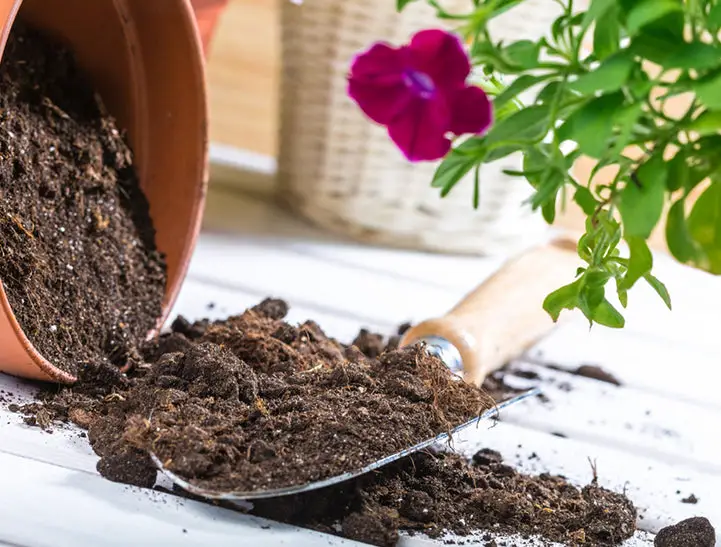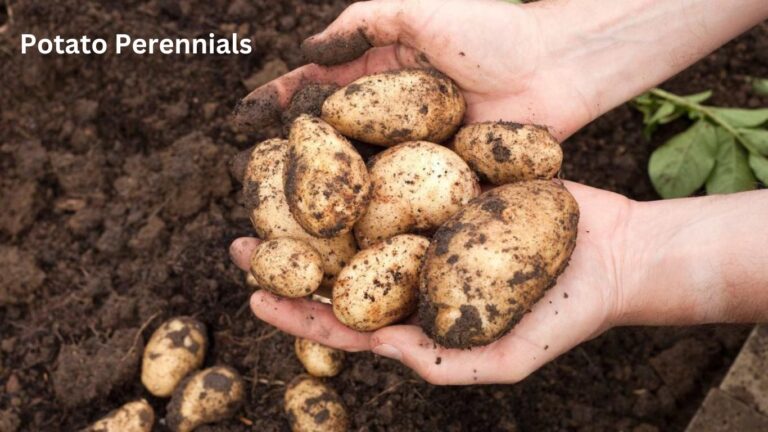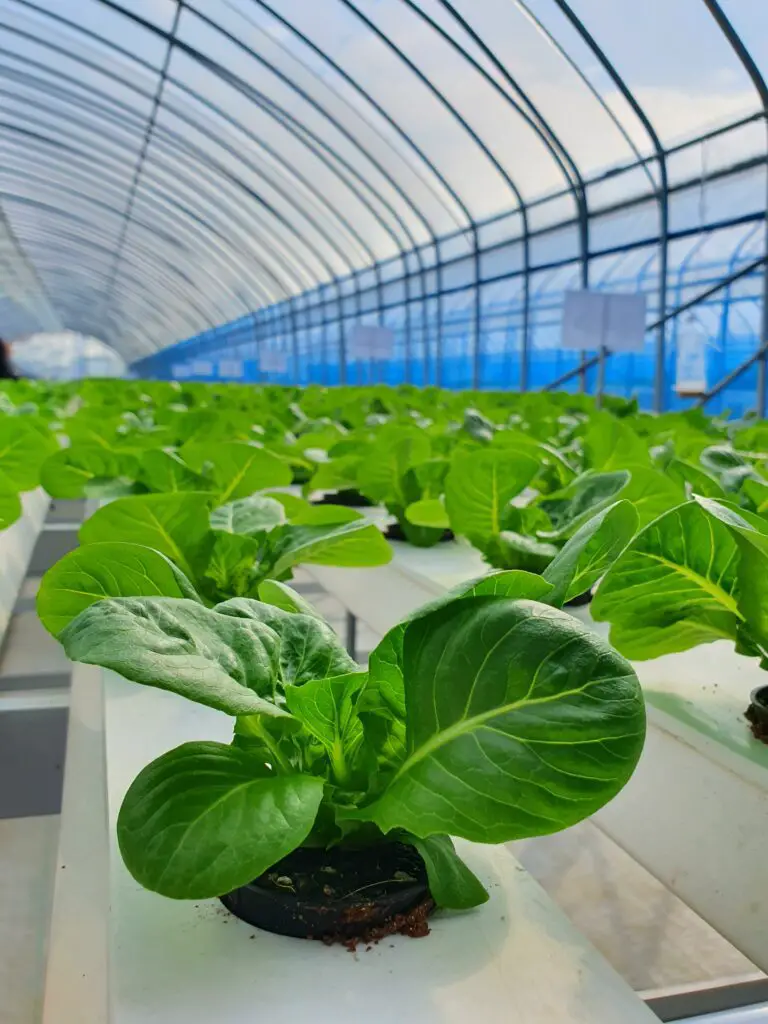How to Grow and Care For a Christmas Cactus
Table of Contents
Understanding the Christmas Cactus: A Brief Overview
The Christmas cactus, scientifically known as Schlumbergera, is a popular houseplant that is cherished for its vibrant blooms during the holiday season. It belongs to the family Cactaceae and is native to the tropical rainforests of Brazil. Unlike other cacti, the Christmas cactus does not thrive in arid conditions but prefers a more humid environment. Its flat, segmented stems are the source of its unique beauty, bearing colorful flowers that can range from shades of pink, red, white, and even purple.
One of the distinguishing features of the Christmas cactus is its ability to bloom during the winter months when many other plants are dormant. This makes it a cherished addition to holiday decorations and gift exchanges. However, it is important to note that the Christmas cactus requires specific care to ensure healthy growth and abundant blooms. From providing the right lighting conditions to understanding its unique watering needs, a deep understanding of this plant is crucial for successful cultivation.

Selecting the Perfect Location for Your Christmas Cactus
When it comes to selecting the perfect location for your Christmas cactus, there are a few key factors to consider. First and foremost, it’s important to choose a spot that provides the right amount of sunlight. Christmas cacti thrive in bright, indirect light, so placing them near a north or east-facing window is ideal. Avoid placing your cactus in direct sunlight, as this can lead to sunburn and damage to the leaves.
In addition to light, temperature is another important factor to consider. Christmas cacti prefer cooler temperatures, typically between 60 and 70 degrees Fahrenheit (15 to 21 degrees Celsius). It’s important to avoid placing your cactus in a drafty area or near heating vents, as extreme temperature fluctuations can stress the plant and hinder its growth. Finding a location with a stable temperature will help ensure the health and vitality of your Christmas cactus.
• Choose a spot that provides bright, indirect light
• Place the cactus near a north or east-facing window for optimal sunlight exposure
• Avoid placing the cactus in direct sunlight to prevent sunburn and leaf damage
• Maintain cooler temperatures between 60 and 70 degrees Fahrenheit (15 to 21 degrees Celsius)
• Avoid drafty areas or locations near heating vents to prevent temperature fluctuations
• Find a location with stable temperature conditions to support healthy growth of the Christmas cactus.
Providing Adequate Lighting for Healthy Growth
The Christmas cactus, scientifically known as Schlumbergera, is an intriguing plant that requires adequate lighting to thrive and promote healthy growth. As a photosynthetic organism, the Christmas cactus relies on light as a primary source of energy for its metabolic processes. Therefore, selecting the right lighting conditions is crucial to ensure optimal development and overall well-being.
When it comes to providing adequate lighting for your Christmas cactus, it is important to strike the right balance. While these plants prefer bright, indirect light, direct sunlight can be detrimental and lead to sunburn or scorched leaves. Consider placing your Christmas cactus near a north or east-facing window where it can receive a moderate amount of light throughout the day. If a suitable window location is not available, fluorescent lights can be used as a supplemental light source to mimic natural daylight. This is particularly important during the winter months when natural light may be limited. By providing the proper lighting conditions, you can help your Christmas cactus thrive and continue to flourish year after year.
Remember, light plays a crucial role in the growth and development of your Christmas cactus. By selecting the perfect location and using appropriate lighting techniques, you can ensure that your plant receives the right amount of light to promote healthy growth. Stay tuned for our next section, where we will explore the temperature and humidity requirements for a Christmas cactus to provide you with even more valuable insights for successful cultivation.
Temperature and Humidity Requirements for a Christmas Cactus
The temperature and humidity requirements for a Christmas cactus play a vital role in its overall health and vitality. This tropical plant thrives in a warm and humid environment, mimicking its natural habitat. Ideally, a Christmas cactus should be kept in an area with temperatures ranging between 60°F and 70°F (15°C to 24°C). It is important to avoid extreme temperature fluctuations, as they can cause stress to the plant. Moreover, a relative humidity level of around 50% to 60% is considered optimal for this species. Creating the right conditions for temperature and humidity will ensure the Christmas cactus remains healthy and capable of producing its stunning blooms.
To maintain the ideal temperature and humidity for your Christmas cactus, there are a few strategies you can employ. Firstly, try to place the plant in a location where it can receive bright, indirect sunlight, as this will help regulate the temperature. Avoid direct sunlight, as it can scorch the leaves. Secondly, consider placing the Christmas cactus in a room with higher humidity, such as a bathroom or kitchen. You can also use a small humidifier to increase moisture levels in the air. Additionally, misting the plant with water periodically can provide a quick boost of humidity. By paying careful attention to temperature and humidity parameters, you can ensure a thriving Christmas cactus that will reward you with its vibrant blooms.

Watering Techniques to Keep Your Christmas Cactus Thriving
To keep your Christmas cactus thriving, proper watering techniques are essential. This tropical plant requires a delicate balance of moisture to ensure optimal growth and prevent issues such as root rot. Overwatering can be detrimental, while under-watering can lead to dehydration and wilted foliage. So, how do you find that sweet spot?
Firstly, it’s important to understand that the Christmas cactus prefers moist, well-draining soil. When watering, aim to saturate the soil thoroughly, allowing excess water to escape from the drainage holes. However, avoid leaving your cactus in standing water, as this can lead to root rot. As a general rule of thumb, water your Christmas cactus when the top inch of soil feels dry to the touch. Monitor the moisture level regularly, especially during the blooming season, as the plant may require more frequent watering. Remember, it’s better to slightly underwater than overwater, as the plant can tolerate short periods of drought.
Choosing the Right Soil Mix for Optimal Growth
Choosing the right soil mix is crucial for the optimal growth and development of your Christmas cactus. The right soil composition can provide the necessary nutrients, drainage, and moisture retention that this plant requires. Christmas cacti thrive in a well-draining soil that is light and porous, allowing water to pass through easily while also retaining some moisture for the roots.
A recommended soil mix for your Christmas cactus could include a combination of potting soil, peat moss, perlite, and coarse sand. Potting soil provides a solid foundation and essential nutrients, while peat moss helps retain moisture without causing waterlogging. Adding perlite and coarse sand increases the soil’s porosity, ensuring adequate drainage and preventing the risk of root rot. This well-balanced mix allows the roots to breathe, and the cactus to absorb essential water and nutrients efficiently. Furthermore, it minimizes the risk of overwatering, a common mistake that can lead to root diseases and hinder growth.
To ensure your Christmas cactus thrives, it is essential to choose the right soil mix that suits its specific requirements. By selecting a mixture that offers both drainage and moisture retention, you can provide the optimal growing conditions for this beautiful plant. A well-maintained soil environment will contribute to its overall health, resulting in vibrant blooms and lush greenery.
Fertilizing Tips to Promote Blooming and Greenery
When it comes to fertilizing your Christmas cactus, there are a few key tips to keep in mind in order to promote blooming and maintain vibrant greenery. First and foremost, it is important to choose the right fertilizer specifically formulated for cacti or succulents. These fertilizers are typically high in phosphorus, which is essential for flower development.
To ensure optimal results, it is recommended to fertilize your Christmas cactus every two to four weeks during the growing season, which typically occurs from spring to early fall. During this time, dilute the fertilizer to half the recommended strength and apply it directly to the soil. Be cautious not to over-fertilize, as this can lead to salt build-up and damage the plant.
Additionally, when fertilizing your Christmas cactus, it is essential to provide proper watering to facilitate nutrient uptake. Before applying fertilizer, ensure that the soil is moist but not waterlogged. This allows the roots to absorb the nutrients efficiently. Additionally, never fertilize a dry Christmas cactus, as this can lead to fertilizer burn and stress the plant. By following these fertilizing tips, you can promote blooming and maintain the lush green appearance of your Christmas cactus throughout the year.

Pruning and Shaping Your Christmas Cactus for a Compact Form
Pruning and shaping your Christmas cactus is essential for maintaining a compact form that will showcase the plant’s vibrant blooms. Regular pruning helps control the size of the cactus, preventing it from growing too leggy or sprawling. Additionally, shaping the plant allows for a more visually appealing and balanced appearance. By following a few simple techniques, you can easily keep your Christmas cactus looking its best.
First, identify any long or straggly stems that need pruning. Using clean, sharp pruning shears, make clean cuts just above a node or joint on the stem. This encourages new growth and promotes a bushier, more compact form. Be mindful not to remove too much foliage at once, as this may stress the plant. Instead, prune gradually over time to achieve the desired shape. Remember to wear gloves while handling the Christmas cactus, as its leaves have tiny spines that can be prickly to the touch.
In addition to pruning, shaping your Christmas cactus involves training the plant to grow in a specific direction or form. This can be done by gently bending or tying the stems using soft plant ties or twine. You can guide the growth of your cactus by attaching the stems to stakes or supports, allowing them to grow in a desired direction. Regularly check the ties to ensure they are not too tight, as this may restrict growth or cause damage to the stems. With patience and regular maintenance, you can achieve a beautifully compact and well-shaped Christmas cactus that will be the highlight of your plant collection.
Propagation Methods for Expanding Your Christmas Cactus Collection
The Christmas cactus, native to the tropical rainforests of Brazil, is a popular houseplant known for its vibrant flowers that bloom during the holiday season. For gardeners who want to expand their collection of these stunning plants, propagation methods offer a simple and cost-effective way to do so.
One common method of propagating Christmas cacti is through stem cuttings. To start, select a healthy segment of the plant’s stem, around three to four inches in length. Using a clean, sharp knife or scissors, make a clean cut just below a joint. Allow the cutting to dry for a few hours, then dip the cut end in rooting hormone powder, which can encourage faster root development. Plant the cutting in a well-draining potting mix, keeping the soil lightly moist. After a few weeks, roots should begin to form, indicating successful propagation.
Dealing with Common Pests and Diseases that Affect Christmas Cacti
Christmas cacti are generally hardy plants, but they can still fall victim to common pests and diseases. One of the most common pests that affect Christmas cacti is the mealybug. These small, white insects can be found on the stems and leaves of the plant, sucking sap and causing damage. Additionally, spider mites can also infest Christmas cacti, spinning tiny webs and causing leaves to yellow and drop. It is essential to promptly identify and address these pests to prevent further damage to your cherished Christmas cactus plants.
Another concern for Christmas cacti is fungal diseases, particularly root rot. This can occur when the plant is overwatered or when it is planted in a poorly-draining soil mix. Signs of root rot include wilting, yellowing leaves, and the presence of a foul odor. To prevent root rot, ensure that you water your Christmas cactus moderately and allow the soil to dry out between watering. Additionally, using a well-draining soil mix specifically formulated for cacti and succulents can help avoid excess moisture and reduce the risk of fungal infections.
Recognizing Signs of Stress and Providing Proper Care
Recognizing Signs of Stress and Providing Proper Care can greatly contribute to the overall health and vitality of your Christmas cactus. As an attentive gardener, it is essential to be familiar with the telltale signs that your plant may be experiencing stress. One common indicator is yellowing or browning of the leaves, which could be a result of inadequate watering or nutrient deficiency. Additionally, if your Christmas cactus starts dropping its buds or leaves prematurely, it may be a sign that it is not receiving the optimal environmental conditions it requires.
To care for a stressed Christmas cactus, it is crucial to address the underlying issues promptly. First and foremost, assess the watering routine – ensuring that you are providing adequate moisture without overwatering. Remember, Christmas cacti prefer slightly dry conditions between watering sessions, so aim to water only when the top inch of soil feels dry to the touch. Furthermore, pay attention to the placement of your plant. Improper lighting or extreme temperature fluctuations can lead to stress. Provide your Christmas cactus with bright, indirect light and keep it away from cold drafts or direct heat sources. By taking these proactive measures, you can help your Christmas cactus recover and thrive once again.

Adjusting Care During the Dormancy Period
During the dormancy period, the care requirements for your Christmas cactus will change. This period typically occurs from late fall to early spring and is characterized by slower growth and minimal blooming. Adjusting your care routine during this time will help ensure the health and vitality of your plant.
Firstly, it’s important to reduce the frequency of watering during the dormancy period. Since the plant is not actively growing, it requires less moisture. Allow the soil to dry out slightly between each watering to prevent overwatering, which can lead to root rot. It’s also advisable to avoid fertilizing during this time to avoid stimulating new growth.
In addition to adjusting your watering routine, it’s important to provide your Christmas cactus with cooler temperatures during dormancy. Ideally, the temperature should be around 50-60°F (10-15°C). This shift in temperature can help stimulate the plant’s natural resting state and encourage the development of flower buds for the coming blooming season.
By modifying your care routine to accommodate the dormancy period, you can ensure that your Christmas cactus receives the appropriate conditions for its growth and development. Providing the right amount of water and maintaining cooler temperatures will allow your plant to rest and prepare for the next blooming cycle. Remember to monitor your plant closely during dormancy and make any necessary adjustments to ensure its well-being.
Understanding the Different Varieties of Christmas Cacti
Christmas cacti, also known as Schlumbergera, are a popular houseplant during the holiday season due to their beautiful blooms and easy care requirements. These cacti are native to the cloud forests of Brazil and are known for their unique ability to bloom during the winter months. What many people may not realize is that there are actually several different varieties of Christmas cacti, each with its own distinct characteristics.
One of the most common varieties of Christmas cactus is the Schlumbergera Truncata, which features rounded leaf segments and typically blooms in shades of pink, red, or white. This variety is known for its cascading growth habit and can produce an abundance of flowers. Another popular variety is the Schlumbergera Buckleyi, which has pointed leaf segments and blooms in shades of red, pink, or purple. This variety tends to have a more compact growth habit and produces slightly smaller flowers compared to the Truncata variety. Additionally, there are hybrids available that combine the traits of both varieties, resulting in unique colors and characteristics.
Decorating and Displaying Your Christmas Cactus During the Holiday Season
The holiday season is a perfect time to enhance the festive atmosphere by decorating and displaying your Christmas cactus. With its unique and beautiful blooms, the Christmas cactus can be a stunning addition to your holiday decor. One popular way to showcase your Christmas cactus is by placing it in a decorative pot or container. Opt for a container that complements the colors of the blooms and the overall theme of your holiday decorations. Ensure that the pot has proper drainage to prevent overwatering, as excessive moisture can lead to root rot.
In addition to selecting the right container, consider placing your Christmas cactus in a prominent location where it can be admired by family and guests alike. A windowsill, coffee table, or mantel can serve as ideal spots to highlight the beauty of your plant. Take into account the lighting requirements of your Christmas cactus and choose a location that provides adequate illumination. While the Christmas cactus thrives in bright, indirect light, it’s important to avoid placing it in direct sunlight, as this can result in leaf burning. By strategically placing your Christmas cactus in a well-lit and visually appealing area, you can add an elegant touch to your holiday decorations.
Troubleshooting Common Issues and Solutions
One common issue that gardeners may encounter with their Christmas cactus is root rot. This condition occurs when the roots of the plant become overly saturated with water, leading to decay and ultimately the death of the cactus. To avoid this problem, it’s essential to ensure that the Christmas cactus is not sitting in standing water and that the soil is well-draining. It’s also vital to water the plant sparingly, allowing the top inch of soil to dry out between waterings. Additionally, using a pot with drainage holes and a well-draining soil mix can help prevent root rot from occurring.
Another issue that gardeners may face is a lack of blooming on their Christmas cactus. The most common reason for this is inadequate light exposure. Christmas cacti require bright, indirect light to initiate blooming. If your cactus is not receiving enough light, it may not produce flowers. To resolve this issue, ensure that your Christmas cactus is placed in a location with bright but indirect sunlight throughout the day. If natural light is limited, you can supplement with artificial grow lights to provide the necessary light intensity. By addressing these common issues, you can ensure that your Christmas cactus thrives and blooms beautifully.
Long-Term Care Tips for a Thriving Christmas Cactus
Long-Term Care Tips for a Thriving Christmas Cactus
Proper long-term care is essential for the health and vitality of your cherished Christmas cactus. By following a few simple guidelines, you can ensure that your plant thrives for many years to come.
First and foremost, it’s important to provide your Christmas cactus with the right amount of light. These plants prefer bright, indirect sunlight, making them ideal for indoor environments. Place your cactus near a window with filtered light or use a sheer curtain to diffuse direct sunlight. Avoid placing your cactus in areas with intense heat or drafts, as these conditions can cause stress and hinder growth.
Secondly, watering your Christmas cactus correctly is key to its long-term well-being. These plants require regular but moderate watering. Overwatering can lead to root rot, while underwatering can cause the plant to wither. A good rule of thumb is to water the cactus when the top inch of soil feels dry to the touch. Remember to use room temperature water to prevent shocking the roots. Additionally, it’s best to water your Christmas cactus thoroughly, allowing excess water to drain from the pot.
How often should I water my Christmas cactus?
The frequency of watering will depend on various factors such as the temperature and humidity levels in your home, but as a general rule, water your Christmas cactus when the top inch of the soil feels dry to the touch.
Can I place my Christmas cactus outside during the summer months?
While Christmas cacti are typically indoor plants, they can be moved outdoors during the summer months as long as they are protected from direct sunlight and extreme weather conditions.
How do I know if my Christmas cactus is getting enough light?
If your Christmas cactus is not blooming or its leaves are pale in color, it may not be getting enough light. Consider moving it to a brighter location or providing artificial lighting.
Can I propagate my Christmas cactus from a single leaf?
No, you cannot propagate a Christmas cactus from a single leaf. However, you can propagate it by taking stem cuttings and rooting them in a suitable growing medium.
What are some common pests that can affect my Christmas cactus?
Common pests that can affect Christmas cacti include mealybugs, aphids, and spider mites. Regularly inspect your plant for any signs of infestation and take appropriate measures to control them.
How do I know if my Christmas cactus is stressed?
Signs of stress in a Christmas cactus can include wilting, yellowing or dropping leaves, and lack of growth. Assess the plant’s environmental conditions and adjust as necessary to alleviate stress.
Can I display my Christmas cactus near a drafty window?
It is best to avoid placing your Christmas cactus near drafty windows as sudden temperature changes can be detrimental to its health. Opt for a more stable location in your home.
How long does the dormancy period for a Christmas cactus typically last?
The dormancy period for a Christmas cactus usually occurs in late fall or winter and can last anywhere from a few weeks to a couple of months. During this time, reduce watering and provide cooler temperatures.
Are there any specific varieties of Christmas cacti that are easier to care for?
While all Christmas cacti require similar care, some varieties such as the Schlumbergera truncata and Schlumbergera x buckleyi are known to be more forgiving and easier to care for.
Can I use regular potting soil for my Christmas cactus?
Regular potting soil may be too heavy and retain too much moisture for a Christmas cactus. It is advisable to use a well-draining soil mix specifically formulated for cacti and succulents.

Beck Wakeford is a dedicated writer at SouthElMonteHydroponics, with a fervent enthusiasm for agriculture and technological innovation. Armed with a degree in Agricultural Engineering from a leading university, Beck specializes in hydroponic systems design, automation, and optimization. Their passion for merging traditional farming with cutting-edge technology drives them to explore novel solutions for sustainable food production. Beck’s expertise and keen interest in the intersection of engineering and agriculture make them a valuable asset in the quest for efficient and eco-friendly farming practices. Through their writing, Beck aims to inspire others to embrace the potential of hydroponics in shaping a more sustainable future.






